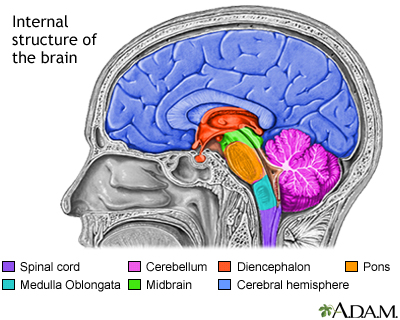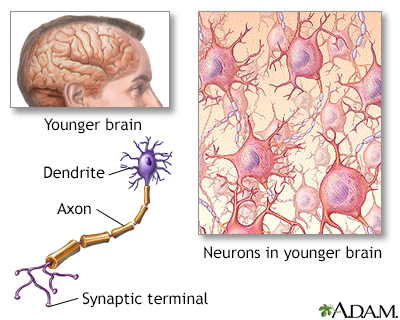Provisional tic disorder
Provisional (transient) tic disorder is a condition in which a person makes one or many brief, repeated, movements or noises (tics). These movements or noises are involuntary (not on purpose).
Causes
Provisional tic disorder is common in children.
The cause of provisional tic disorder can be physical or mental (psychological). It may be a mild form of Tourette syndrome.
Tourette syndrome
Tourette syndrome is a condition that causes a person to make repeated, quick movements or sounds that they cannot control.
Read Article Now Book Mark ArticleSymptoms
The child may have facial tics or tics involving movement of the arms, legs, or other areas.
Facial tics
A facial tic is a repeated spasm, often involving the eyes and muscles of the face.

Tics may involve:
- Movements that occur again and again and do not have a rhythm
- An overwhelming urge to make the movement
- Brief and jerky movements that include blinking, clenching the fists, jerking the arms, kicking, raising the eyebrows, sticking out the tongue
The tics often look like nervous behavior. Tics appear to get worse with stress. They do not occur during sleep.
Sounds may also occur, such as:
- Clicking
- Grunting
- Hissing
- Moaning
- Sniffing
- Snorting
- Squealing
- Throat clearing
Exams and Tests
The health care provider will consider physical causes of transient tic disorder before making a diagnosis.
In order to be diagnosed with transient tic disorder, the child must have had tics almost every day for at least 4 weeks, but less than a year.
Other disorders such as anxiety, attention deficit hyperactivity disorder (ADHD), uncontrollable movement (myoclonus), obsessive-compulsive disorder, and epilepsy may need to be ruled out.
Anxiety
Generalized anxiety disorder (GAD) is a mental disorder in which a person is often worried or anxious about many things and finds it hard to control ...

ADHD
Attention deficit hyperactivity disorder (ADHD) is a problem caused by the presence of one or more of these findings:Not being able to focusBeing ove...

Myoclonus
Uncontrollable movements include many types of movements that you cannot control. They can affect the arms, legs, face, neck, or other parts of the ...

Obsessive-compulsive disorder
Obsessive-compulsive disorder (OCD) is a mental disorder in which people have unwanted and repeated thoughts, feelings, ideas, sensations (obsessions...

Epilepsy
Epilepsy is a brain disorder in which a person has repeated seizures over time. Seizures are episodes of uncontrolled and abnormal electrical activi...

Treatment
Providers recommend that family members do not call attention to the tics at first. This is because unwanted attention may make the tics worse. If the tics are severe enough to cause problems at school or work, behavioral techniques and medicines may help.
Outlook (Prognosis)
Simple childhood tics usually disappear over a period of months.
Possible Complications
There are usually no complications. A chronic motor tic disorder can develop.
Chronic motor tic disorder
Chronic motor or vocal tic disorder is a condition that involves quick, uncontrollable movements or vocal outbursts (but not both).

When to Contact a Medical Professional
Talk to your child's provider if you are concerned about a transient tic disorder, especially if it continues or disrupts your child's life. If you are not sure whether the movements are a tic or a seizure, call the provider right away.
Seizure
A seizure is the physical changes in behavior that occurs during an episode of specific types of abnormal electrical activity in the brain. The term ...

Reviewed By
Joseph V. Campellone, MD, Department of Neurology, Cooper Medical School at Rowan University, Camden, NJ. Review provided by VeriMed Healthcare Network. Also reviewed by David Zieve, MD, MHA, Medical Director, Brenda Conaway, Editorial Director, and the A.D.A.M. Editorial team.
Ryan CA, Walter HJ, DeMaso DR, Walter HJ. Motor disorders and habits. In: Kliegman RM, St. Geme JW, Blum NJ, Shah SS, Tasker RC, Wilson KM, eds. Nelson Textbook of Pediatrics. 21st ed. Philadelphia, PA: Elsevier; 2020:chap 37.
Tochen L, Singer HS. Tics and Tourette syndrome. In: Swaiman K, Ashwal S, Ferriero DM, et al, eds. Swaiman's Pediatric Neurology: Principles and Practice. 6th ed. Philadelphia, PA: Elsevier; 2017:chap 98.
Disclaimer





 All rights reserved.
All rights reserved.